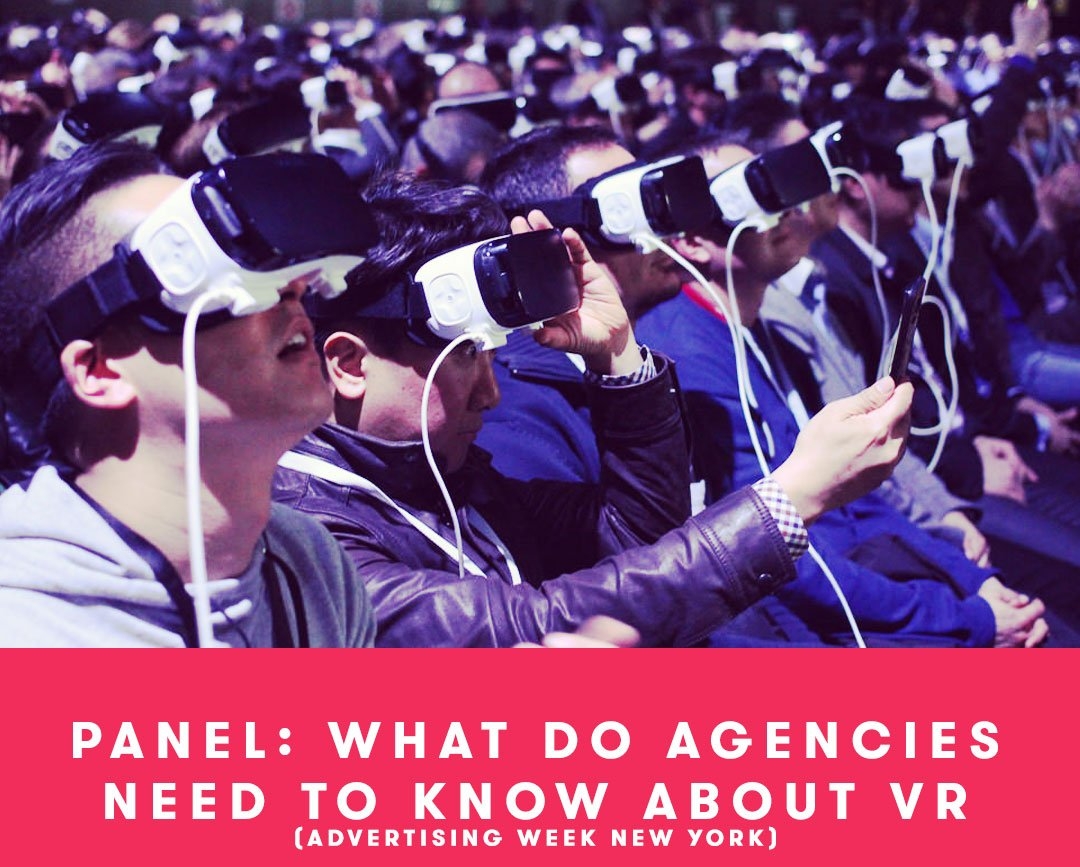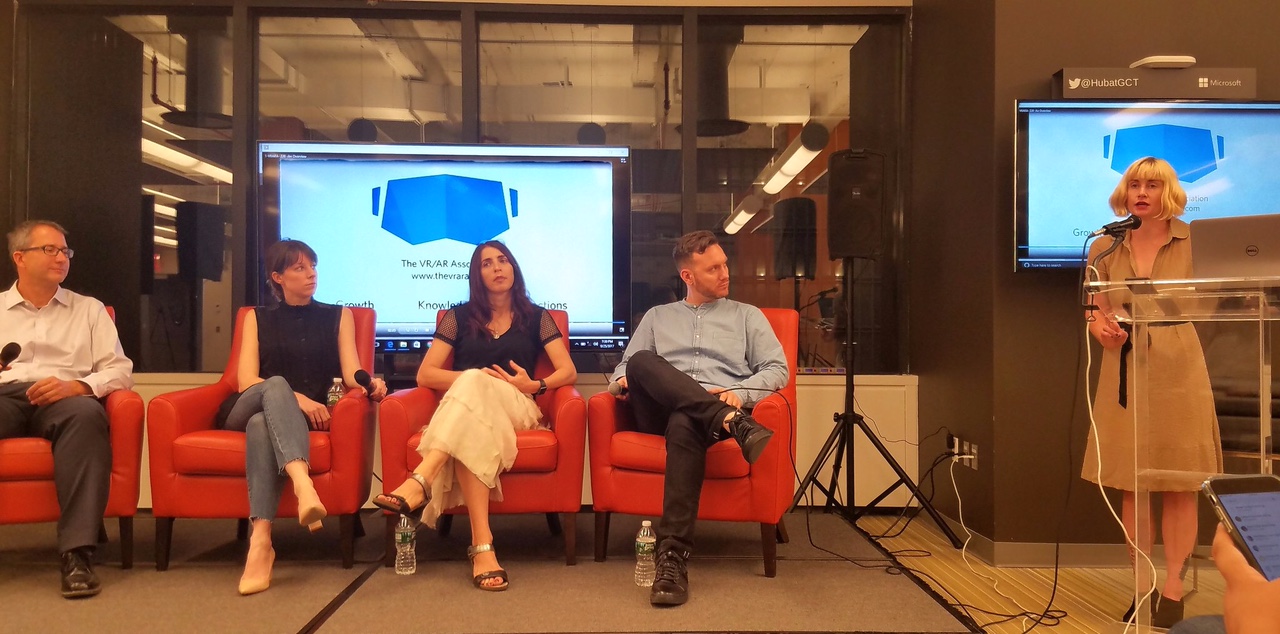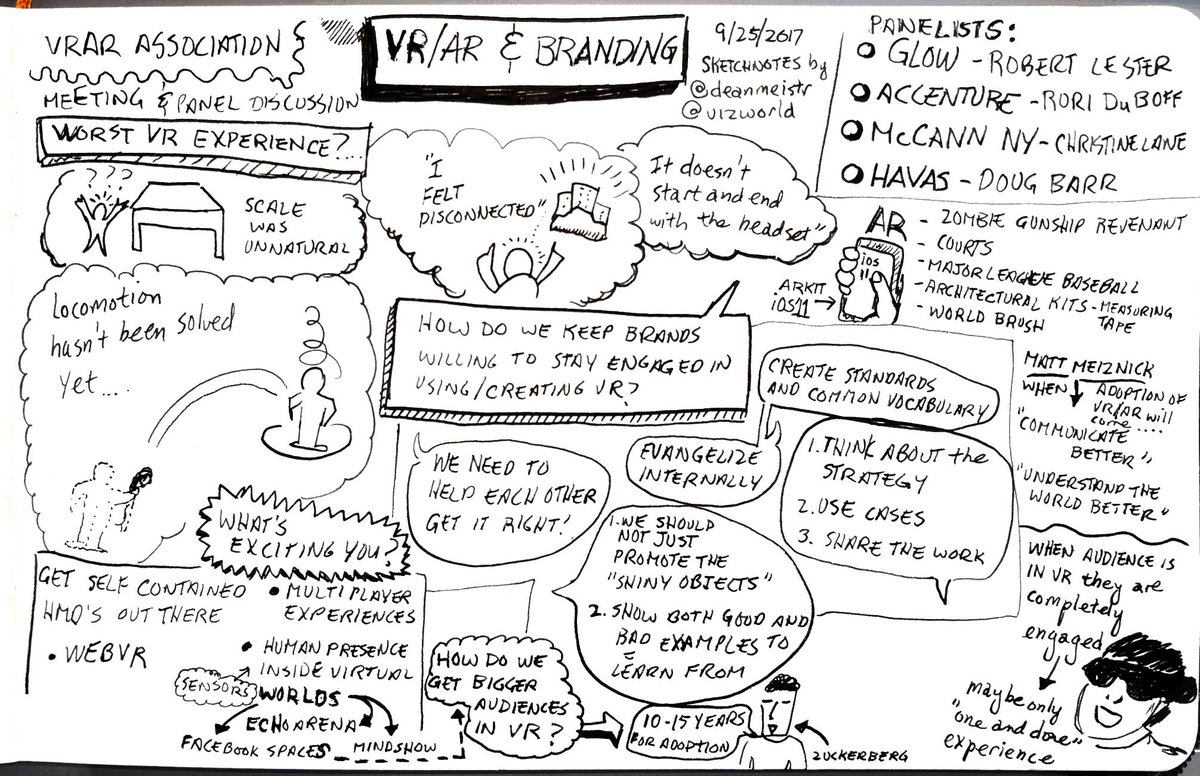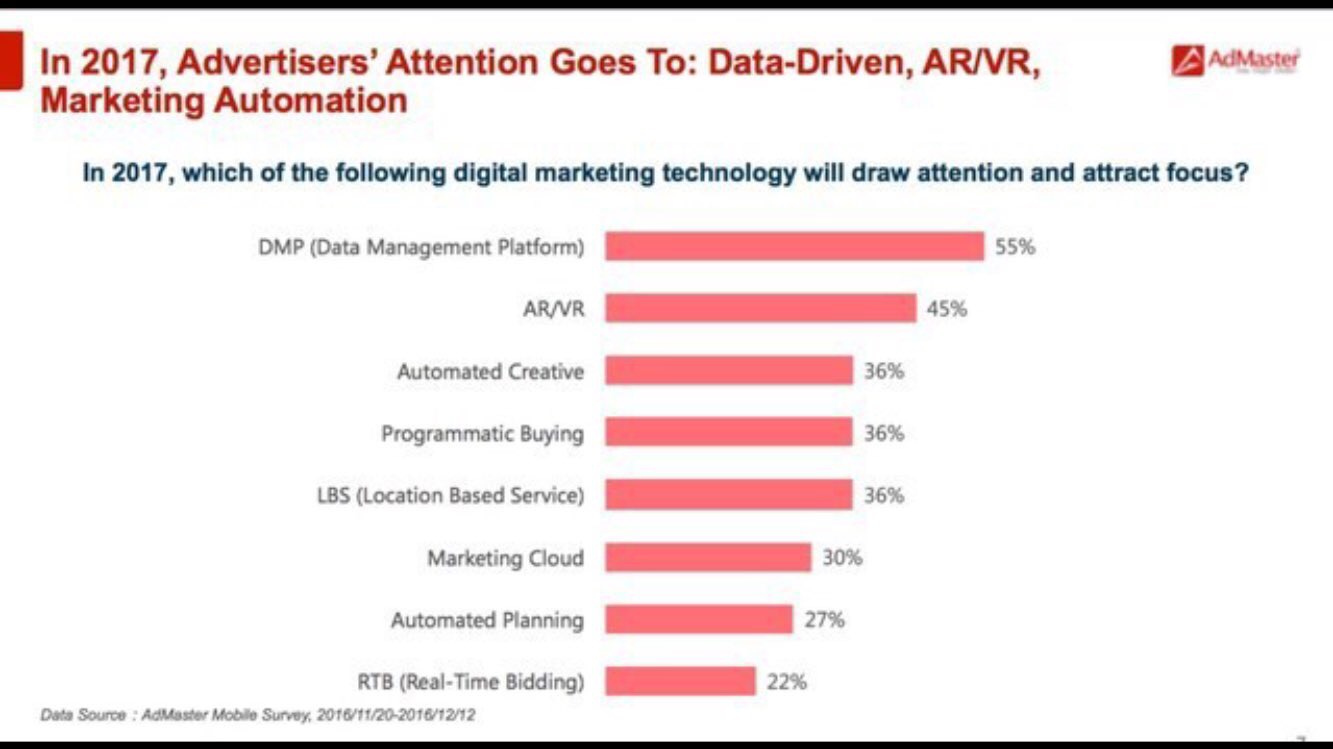By Cortney Harding, Co-Chair of VRARA Advertising Committee
On September 25, the VR/AR Association NYC Chapter hosted a panel during Advertising Week New York of leading advertisers working in VR/AR to spark discussion about virtual and augmented reality and possible use cases in branded work. Moderated by Friends With Holograms founder Cortney Harding (Co-Chair of the VRARA Advertising Committee), the panel featured Rori Duboff of Accenture, Robert Lester of Glow, Doug Barr of Havas, and Christine Lane of McCann.
To kick the panel off, everyone was asked about the worst VR/AR experience they’d ever seen, and what lessons could be learned from the mistakes those creators made. Lester pointed to a narrative piece that missed the mark with scale, where the user constantly changed perspectives and sizes, while Lane pointed to a more common example of a nature piece that succumbed to subpar CG. DuBoff also referenced a piece that got scale wrong, and Barr pointed out common problems with locomotion, especially pieces set on roller coasters, which can sometimes make viewers sick.
While all of the problems present in these pieces are fairly easy to solve, they highlight another dilemma -- how to make sure agencies and brands don’t try one piece, have it fail, and decide that VR and AR are not worth exploring further. Barr referenced a situation where he helped a competitor fix a piece and while his client wasn’t happy about, he believes that a rising tide will lift all boats, and the more good work is on the market, the better. Lester pointed to the need for internal evangelists at agencies and brands, and DuBoff and Lane both said that advocates need to share both good and bad use cases in order for clients to learn and focus.
In terms of moving forward, all the panelists had specific new developments they were excited about, ranging standalone headsets that are rumored to be coming soon to multiplayer experiences to webVR and social VR. In terms of spreading the technology, Barr pointed out that VR has a faster adoption rate than several other well-known devices, while other cautioned patience and the need to use it in training applications to get it to users.
Augmented reality is still fairly new for the most part, as ARKit only recently launched, but all the panelists were bullish on how it would be adopted by brands. Use cases ranged from practical (tape measures, furniture placement) to informational (the MLB app that allows users to view more stats) to the ridiculous (an app that allows users to paint on the world).
The conversation then shifted to the metrics brands care about when evaluating VR and AR pieces, and the need to create stickier content that users will return to again and again. Panelists pointed out the heatmaps are a great way for brands to measure how long viewers looked at something and tweak campaigns to respond to that data. Finally, the panelists were generally behind giving away cheaper headsets as a gateway to VR, even though the quality might not be ideal.
The event was the first in what will hopefully be a series of conversations presented by the VRARA and Friends With Holograms to inform brands about the possibilities and best practices for VR and AR.
Advertisers considered VR/AR as their number second focus in 2017 for digital marketing technologies:
We invite all to join the discussion as part of our Advertising Committee, join here.






